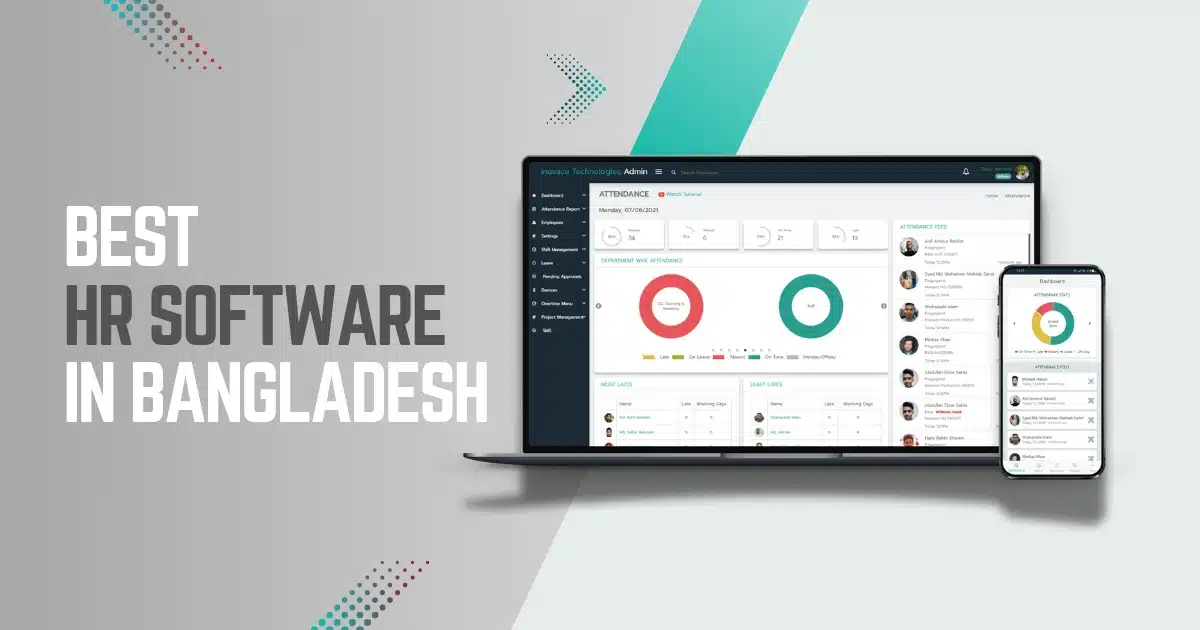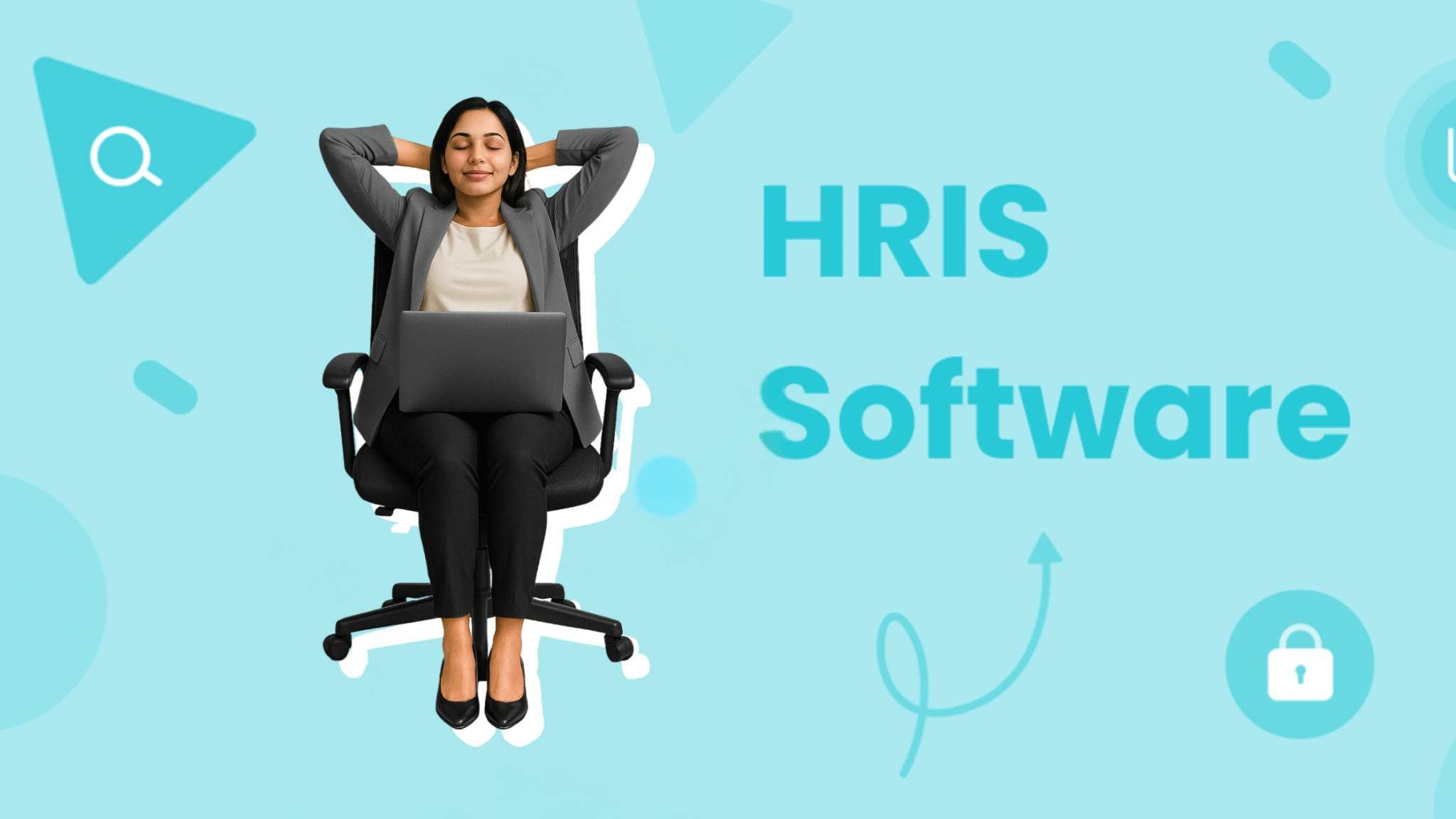We’ve all been there—an unexpected situation arises, and you need to step away from work. Whether it’s a sudden health issue, a family emergency, or an urgent personal matter, casual leave is your go-to solution. But what exactly does casual leave mean, and how can you make the most of it without overstepping the boundaries of workplace policies?
In today’s fast-paced world, having the option to take casual leave is crucial. It gives employees the flexibility they need to manage personal affairs while maintaining a balance with their professional responsibilities. Understanding when and how to request casual leave can make a big difference in how smoothly your time away is handled.
Let’s break down everything you need to know about casual leave, including its meaning, how to apply, and some examples of valid reasons for taking it.
What Are Casual Leaves
Casual leave is a type of unplanned time off from work that employees can take to address personal matters or emergencies that arise unexpectedly. In essence, casual leave meaning refers to leave taken for personal reasons or unforeseen situations that require immediate attention, such as a family emergency or health-related issues. It’s also called leave for personal reasons depending on the situation.
As a matter of fact, it’s up to your manager or CEO to decide whether you can take a leave of absence, and they will decide if it’s okay. An individual’s ability to take a leave of absence varies based on the situation and the valid reasons for leave as well as the rules of the workplace. Casual leaves reason can include family emergencies, personal issues, or health-related problems.
All things considered, you should only take casual leave if you really need it, and you shouldn’t abuse it. By all means, you need to make sure you have a valid reason for casual leave and that you’ve told the right person in advance. If possible, provide the reason for your leave application so that it’s clear and understood.
However, if your organization has an HRMS System or software, you can apply for leave through that system as well. Also, most of the offices now have a biometric authentication system for proper attendance maintenance. So, eventually, it will notify your immediate manager if you haven’t already entered the office premises on time. This ensures that any casual leave request is documented properly and no discrepancies arise.
Casual Leave Policy: How It Works
A Casual Leave Policy outlines the rules for requesting and using casual leave in an organization. While policies may vary, the general principles are similar across most companies. Here’s a quick breakdown:
1. Leave Entitlement
- Typically 6 to 12 days per year, depending on company size and local laws.
- Pro-rata leave may apply for new employees based on their joining date.
2. Approval Process
- Advance Request: Ideally, request leave ahead of time to ensure smooth operations.
- Emergency Leave: Can be taken without prior approval, but inform your manager or HR ASAP.
- Employer’s Discretion: Employers can deny leave if it affects business needs.
3. Carry Forward & Lapse
- Casual leave does not carry over to the next year and typically lapses at year-end.
- Leave encashment is rare for casual leave but may apply to earned leave.
4. Maximum Leave Limit
- Usually limited to 2-3 consecutive days. For longer absences, employees must apply for earned leave.
5. Probation Period Restrictions
- Employees on probation may have restricted casual leave, or fewer days available.
Reasons for Casual Leave
Casual leave is typically used to address personal matters or unforeseen circumstances that require time away from work. While each company may have its own rules, the following are considered valid reasons for casual leave in most organizations:
Common Valid Reasons for Casual Leave:
Family Emergencies
- A sudden family situation, such as the illness of a close family member, may require immediate attention and time off from work.
Medical Appointments
- Attending a scheduled doctor’s appointment, therapy session, or any healthcare check-up that cannot be postponed.
Attending to Personal Family Matters
- This includes significant family events like weddings, funerals, or other urgent family matters that demand your presence.
Personal Errands and Commitments
- Sometimes personal tasks such as legal appointments, urgent home repairs, or attending an important event may require you to take time off.
Compensatory Leave for Overtime
- If you’ve worked overtime, compensatory leave can be requested to balance the extra hours worked.
Personal Leave Reasons List
Beyond the commonly understood reasons, there are several other valid personal reasons for casual leave that employees may utilize:
- Family Member is Unwell: Attending to a sick spouse, child, or parent who requires immediate care.
- Health-Related Issues: Dealing with personal health concerns that don’t require sick leave but still need attention (e.g., a cold, minor injury).
- Religious Observances: Observing a religious holiday, event, or ritual that requires time off from work.
- Educational Events: Attending important educational or professional development sessions, such as workshops or conferences.
- Personal Circumstances: Dealing with non-urgent personal issues like moving homes or settling personal matters.
- Unexpected Events: Unforeseen personal events, such as a car breakdown or urgent home maintenance.
Note: Although casual leave is intended for short-term, unexpected events, it’s important to ensure your reason is legitimate and aligns with your company’s policies to avoid misunderstandings.
Here’s a casual leave reasons list that covers everything from health-related issues to personal emergencies, helping you understand common leave requests.

How to Write a Casual Leave Application: Step-by-Step Guide with Samples
Writing a casual leave application is an important skill, especially when you need to request unplanned leave for personal matters. Below is a step-by-step guide to writing an effective casual leave request.
- Start with a formal salutation:
Begin the letter by addressing your immediate supervisor or manager. For example:
“Dear [Manager’s Name],” - Mention the date and type of leave:
Clearly state the casual leave you’re requesting and the dates you’ll be absent. For example:
“I would like to request a casual leave for [number of days] on [date].” - Provide a reason:
Include a valid reason for casual leave, but keep it concise and to the point. You can include a personal reason like:
“Due to a family emergency, I am unable to attend work on [date].”
Or, a health-related reason:
“I need to take a day off due to a doctor’s appointment.” - Request approval:
Politely ask for approval for your leave. For example:
“I kindly request you to approve my leave for the mentioned date.” - Close with a professional sign-off:
End the letter with a professional closing such as:
“Sincerely,”
[Your Name]
Sample Casual Leave Application:
“Dear [Manager’s Name],
I am writing to inform you that I would like to take casual leave on [date] due to [reason for casual leave]. Please consider this request and let me know if you need any further information.
Thank you for your understanding.
Sincerely,
[Your Name]”
By following these steps and keeping the reason for casual leave clear, you ensure your application is both professional and effective. If you want to apply for casual leave through a portal like Tipsoi’s Leave Management System, ensure you check your leave balance, follow the proper workflow, and provide accurate details for approval.
Top Tips for Writing an Effective Casual Leave Application for Office Use
Writing an effective casual leave application is essential for maintaining professionalism at work while ensuring you can take time off when necessary. Here are some top tips for writing a casual leave letter that will be taken seriously:
- Be Clear and Concise
Keep your casual leave application simple and to the point. Mention the reason for casual leave without unnecessary details, while ensuring the reason is valid. For example, rather than writing too much about the situation, just state:
“I am unable to attend work on [date] due to a personal emergency.” - Follow Company Protocol
If your company has a specific format for leave requests, ensure you follow it. Some workplaces have forms or a dedicated software system for applying for casual leave. Use these tools for a faster and more streamlined process. - Provide Adequate Notice
Even though casual leave is often unplanned, it’s good practice to inform your manager as soon as possible. Providing notice early will help in case your absence affects the team’s operations. While you may not always have time to give weeks of notice, try to let your manager know at least a day in advance if possible. - State the Duration
Be clear about how much time you need off. For example, if you’re asking for one day casual leave, mention it directly:
“I would like to request one day casual leave on [date].” This clarity will help your manager make quick decisions. - Use Professional Language
While the reason for your casual leave might be personal, your casual leave request should still be formal. Avoid slang or overly casual language in your request. This helps maintain professionalism even when dealing with personal matters. - Use the Right Tone
Your casual leave application letter should reflect respect and consideration for the workplace. A polite tone will go a long way in ensuring your request is well received. For instance, phrases like “I would appreciate your understanding” or “Thank you for considering my request” are polite and professional.
By following these tips, you can make sure that your casual leave is granted smoothly and professionally, ensuring minimal disruption to your work responsibilities.
How to Ensure Your Casual Leave Request Is Taken Seriously
When you need to take casual leave, it’s crucial to approach the request professionally and ensure it’s taken seriously. Whether it’s for a family emergency, medical appointment, or any unforeseen circumstance, how you communicate your need for leave can make a big difference in getting approval without complications. Here are some tips on how to ask for casual leave the right way:
- Be Transparent and Honest
One of the most important factors in ensuring your casual leave request is respected is transparency. If you’re taking time off for an urgent personal matter, be honest with your manager. Explain your situation clearly without oversharing unnecessary details, but still providing enough context to show that your request is genuine.
Example:
“I need to take time off for a family emergency, and I would appreciate your understanding.”
“I have a doctor’s appointment that I’ve been waiting for, and it’s impossible to reschedule.”
Honesty builds trust, making it more likely that your request will be approved swiftly.
- Ask Politely and Professionally
When submitting your casual leave request, always maintain a polite and respectful tone. A simple, courteous request can go a long way. A polite approach will make a significant difference in how to ask for casual leave. Avoid sounding demanding, and always use phrases like “please” and “thank you.” The manner in which you ask for leave is just as important as the reason for it.
Example Phrases:
“I would be grateful if you could approve my leave for [date].”
“I kindly request your approval for casual leave on [date].”
This conveys professionalism and shows that you respect your supervisor’s time and decision-making.
- Provide Adequate Notice When Possible
Whenever possible, give your employer a heads-up about your leave request. Even if casual leave is often unplanned, informing your manager in advance (even if it’s just a day before) can show that you are considerate and responsible. This allows your manager to plan and adjust the team’s workload, ensuring minimal disruption.
Example:
“I wanted to inform you in advance that I may need to take a casual leave for [reason] on [date].”
- Ensure You Have a Valid Reason
If your leave request is for personal reasons, ensure that it is a valid and justifiable reason that falls within the company’s casual leave policy. Knowing your company’s leave guidelines and adhering to them will strengthen your case and prevent unnecessary delays in approval.
Example:
“I’m requesting leave for a medical appointment that I can’t reschedule.”
- Respect Company Policies
Make sure you follow any company guidelines for submitting leave requests, whether through an HRMS system, email, or formal letter. Using the correct process ensures your leave request is processed quickly and professionally.
Example:
“I’ve submitted my request via the HR portal, as per our company policy.”
Quick Tips for Asking for Casual Leave Politely:
Be clear and concise: State your request and reason briefly.
Stay polite and respectful: Use appropriate language and tone.
Provide enough notice: Whenever possible, inform your manager ahead of time.
Follow company protocol: Stick to the company’s preferred leave request method.
By following these guidelines, you can ensure your leave request is taken seriously and increase the likelihood of a smooth approval process. Whether it’s an emergency or planned personal leave, maintaining professionalism and being transparent with your reasons will help foster trust and understanding. This is the best way to know how to ask for casual leave effectively.
Specific Leave Reasons
There are many valid reasons for casual leave that can arise unexpectedly, requiring you to take time off from work. These casual leave reasons can range from personal emergencies to sudden health issues.
Common casual leave reasons for office include:
- Medical emergencies such as sudden illnesses or accidents.
- Family emergencies, like the illness of a close family member or other urgent matters that require your presence.
- Personal reasons, like attending a legal or important appointment that cannot be scheduled in advance.
- One-day casual leave reasons, such as attending to an urgent task at home or dealing with personal matters that need immediate attention.
In some cases, personal leave reasons list may include family obligations or even a brief mental health day. It’s essential to be transparent about your reason for casual leave to ensure your request is considered appropriate and necessary.
If you need time off for a medical leave, you might be required to provide a valid reason for casual leave or a doctor’s note. This helps to validate your leave request and ensures the reason is understood.
Casual Leave Policies and Guidelines
Every organization has its own casual leave policy that outlines how much casual leave can be taken and the conditions for approval. Understanding your workplace’s casual leave policies is essential for ensuring that you follow the right procedures when requesting time off.
Here are some key aspects commonly found in casual leave policies:
- Eligibility:
Many companies have guidelines on how long you need to be employed before you can apply for casual leave. Some organizations provide a fixed number of casual leave days per year, while others allow employees to accumulate leave days over time. - Leave Duration:
The typical duration for casual leave is one or two days. Some companies allow employees to take casual leave for one day, but if you need more time, it might be counted as paid or unpaid leave. Be sure to check if there are any restrictions on how much casual leave can be taken at once. - Advance Notice:
While casual leave is often unplanned, it’s advisable to notify your manager as soon as possible. In many workplaces, if the casual leave is for personal reasons, you should inform your manager with a leave request email or application. This helps avoid disruptions in workflow and makes sure your absence is noted. - Leave Approval:
Casual leave usually requires approval from a manager or supervisor. Managers may require you to submit a formal casual leave application or fill out a system form to confirm your leave. - Carryover and Accumulation:
Some companies allow unused casual leave to be carried over to the next year, while others may not allow the leave to accumulate. Check your company’s leave policy to ensure you’re aware of how unused leave is handled.
By understanding and following your workplace’s casual leave policy, you can ensure your casual leave request is processed smoothly and with minimal disruption.
Leave Request Etiquette and Messaging
When requesting casual leave, it’s essential to follow proper etiquette and ensure your message is clear and respectful. Whether you’re sending a formal leave request via email or using your company’s HRMS system, maintaining professionalism is key to ensuring your leave request is taken seriously.
Here are some tips on leave request etiquette:
- Be Polite and Professional:
Always use a polite and professional tone when requesting casual leave. Phrases like “I would appreciate your understanding” or “Thank you for considering my request” show respect and professionalism. - State the Reason Clearly:
Although you may be requesting leave for personal reasons, try to be as clear and concise as possible. Don’t overshare unnecessary details, but provide enough information to justify your absence. For instance:
“I need to take casual leave on [date] due to a personal family matter.” - Use the Correct Medium:
If your company has a designated system for leave requests (HRMS or email), use it. If you’re sending an email, follow your company’s usual format for leave applications. If you’re using a software system, make sure to follow the proper steps outlined by HR. - Provide Adequate Time:
Even if casual leave is typically unplanned, try to give your manager as much notice as possible. The more notice you give, the more likely your leave will be approved. For example, if possible, notify your manager at least 24 hours before you need time off. - Be Honest and Transparent:
Honesty is key when explaining your reason for casual leave. If it’s an emergency, it’s acceptable to be direct and brief. However, providing a valid reason for your leave application ensures your absence is understood and managed appropriately.
Casual Leave Reasons Sample and Examples
Having a well-structured casual leave application can ensure that your request is processed smoothly. Here are some leave samples and examples that can help you craft your own casual leave request. These examples cover a range of reasons for leave, making it easier for you to request time off in different situations.
1. Casual Leave Request for Personal Reasons
Subject: Casual Leave Request for Personal Reasons
Dear [Manager’s Name],
I am writing to inform you that I need to take casual leave on [date] due to personal reasons. I will ensure that all my responsibilities are taken care of before my absence. Kindly approve my leave request.
Thank you for your understanding.
Sincerely,
[Your Name]
2. Casual Leave Request for Medical Emergency
Subject: Request for Casual Leave Due to Medical Emergency
Dear [Manager’s Name],
I would like to request casual leave for [date] due to a medical emergency. I am currently unable to attend work but will keep you updated. Please let me know if you require any further details or documentation.
Thank you for your consideration.
Sincerely,
[Your Name]
3. Casual Leave Request for Family Emergency
Subject: Request for Casual Leave for Family Emergency
Dear [Manager’s Name],
I need to take casual leave on [date] due to a family emergency that requires my immediate attention. I apologize for any inconvenience this may cause and will ensure my tasks are covered.
Thank you for your understanding.
Best regards,
[Your Name]
These are just a few examples of how you can structure your casual leave request. The key is to be clear, concise, and polite, while providing enough information for your manager to understand the reason for your absence.
Casual Leave in Office Context
In an office setting, casual leave is a crucial component of workforce management, providing employees the flexibility to attend to personal matters without disrupting their work-life balance. Understanding the role of casual leave in office contexts can help both employees and employers navigate this benefit effectively.
How Casual Leave Works in the Office
Most offices provide employees with a certain number of casual leave days each year. The casual leave policy often differs from vacation or sick leave in that it is typically used for short, unplanned absences due to personal reasons. The reason for casual leave can include a variety of circumstances like:
- Family emergencies (e.g., a sudden illness in the family)
- Medical appointments or minor health issues that don’t require long-term leave
- Personal reasons such as attending a wedding, moving house, or taking care of personal errands
Managing Casual Leave
Many organizations have an automated system (like an HRMS or biometric system) that helps track and manage casual leave. Employees can apply for casual leave through these systems, making it easier for managers to review requests and maintain accurate records.
Managers may approve or deny casual leave requests depending on office policies and how the employee’s absence might impact the team. In some workplaces, casual leave requests for personal reasons might require a quick explanation, while others may need official documentation like a doctor’s note or family emergency details.
Impact on Team and Workload
It’s important to communicate your reason for casual leave well in advance (if possible) to ensure there is minimal disruption to the team’s operations. In larger teams, some employees may need to delegate their responsibilities temporarily, which is why providing a brief reason for the leave request is essential.
Conclusion: Making the Most of Casual Leave
Casual leave is your safety net in an unpredictable world. It helps maintain work-life balance by allowing you to step away when life throws an unexpected curveball. By following leave request etiquette, understanding your company’s casual leave policies, and providing clear leave reasons, you ensure your time off is smooth and professional.
FAQs
What is casual leave?
What is casual leave? Casual leave refers to unplanned time off from work that employees can take for personal matters or emergencies. It allows flexibility to handle situations that cannot be scheduled in advance.
How do I ask for casual leave?
To request casual leave, review your company’s policy, ensure your absence won’t disrupt workflow, schedule a meeting with your supervisor, be professional, and provide any necessary documentation.
How much casual leave am I entitled to?
The amount of casual leave you can take varies depending on your company’s policy. Some companies offer a set number of days, while others have a more flexible approach.
What are some valid reasons for taking casual leave?
Valid reasons for casual leave can include medical appointments, family emergencies, bereavement, or other urgent personal matters that cannot be scheduled in advance.
Why is casual leave important?
Casual leave is important because it allows employees to maintain a healthy work-life balance, address unexpected situations, and ultimately be more productive and engaged at work.
Can I apply for casual leave through an HRMS system?
Yes, if your organization uses an HRMS system, you can often apply for casual leave directly through the system, streamlining the request and approval process.
What should I do if my casual leave is urgent?
If your leave is urgent, inform your manager immediately via email or phone. Apologize for the short notice and explain the urgency clearly in your communication.
Can I take casual leave without prior notice?
Yes, you can take casual leave without prior notice if it’s an emergency. However, it’s important to inform your manager or HR as soon as possible via email, phone, or text message, explaining the urgency. Always follow up with a formal application afterward.
What’s the difference between casual leave and sick leave?
Casual leave is taken for personal or urgent matters that are not necessarily health-related, such as family obligations or appointments. Sick leave, on the other hand, is specifically for health-related issues and often requires a medical certificate as proof.
Comparison Table: Casual Leave vs. Sick Leave
| Feature | Casual Leave | Sick Leave |
|---|---|---|
| Purpose | For personal or urgent matters | For health-related issues |
| Documentation | Not always required | Often requires a medical certificate |
| Advance Notice | Recommended if possible, though emergencies occur | May be taken immediately due to sudden illness |
| Approval Process | Subject to company policies and scheduling | Typically straightforward with proper documentation |
| Duration | Typically short-term (e.g., a day or two) | Variable based on the severity of the illness |
Dos and Don’ts of Asking for Casual Leave
Dos:
- Give Adequate Notice: Plan ahead and inform your manager as early as possible to allow time for adjustments.
- Communicate Clearly: Be upfront about your reason for leave, duration, and any arrangements you’ve made to manage your responsibilities.
- Follow Company Policy: Familiarize yourself with your organization’s leave protocols, including documentation requirements.
- Show Gratitude: Always thank your manager or HR for considering your request and accommodating your absence.
- Be Flexible: If possible, offer alternative dates or solutions if your initial request conflicts with work priorities.
Don’ts:
- Wait Until the Last Minute: Avoid submitting leave requests at the eleventh hour unless it’s an emergency.
- Bypass Your Manager: Always communicate with your direct supervisor first before informing coworkers or clients.
- Be Vague About Details: Provide clear information about the purpose of your leave and its timeline to avoid misunderstandings.
- Ignore Work Responsibilities: Ensure tasks are delegated or completed before you go on leave to minimize disruptions.
- Demand Approval: Remember, asking for leave is a request, not a right. Be polite and professional in your approach.











